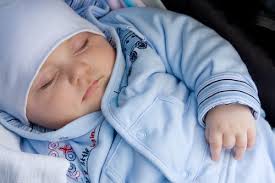Sleep is essential for a person’s health and wellbeing, according to the National Sleep Foundation (NSF). Yet millions of people do not get enough sleep and many suffer from lack of sleep. For example, surveys conducted by the NSF (1999-2004) reveal that at least 40 million Americans suffer from over 70 different sleep disorders and 60 percent of adults report having sleep problems a few nights a week or more. Most of those with these problems go undiagnosed and untreated. In addition, more than 40 percent of adults experience daytime sleepiness severe enough to interfere with their daily activities at least a few days each month - with 20 percent reporting problem sleepiness a few days a week or more. Furthermore, 69 percent of children experience one or more sleep problems a few nights or more during a week.

Everyone’s individual sleep needs vary. In general, most healthy adults are built for 16 hours of wakefulness and need an average of eight hours of sleep a night. However, some individuals are able to function without sleepiness or drowsiness after as little as six hours of sleep. Others can't perform at their peak unless they've slept ten hours. And, contrary to common myth, the need for sleep doesn't decline with age but the ability to sleep for six to eight hours at one time may be reduced
Psychologists and other scientists who study the causes of sleep disorders have shown that such problems can directly or indirectly be tied to abnormalities in the following systems:
Physiological systems
Brain and nervous systemCardiovascular systemMetabolic functionsImmune system
Furthermore, unhealthy conditions, disorders and diseases can also cause sleep problems, including:
Pathological sleepiness, insomnia and accidentsHypertension and elevated cardiovascular risks (MI, stroke)Emotional disorders (depression, bipolar disorder)Obesity; metabolic syndrome and diabetesAlcohol and drug abuse
(Dinges, 2004)
Groups that are at particular risk for sleep deprivation include night shift workers, physicians (average sleep = 6.5 hours a day; residents = 5 hours a day), truck drivers, parents and teenagers. (American Academy of Sleep Medicine and National Heart, Lung, and Blood Institute Working Group on Problem Sleepiness. 1997).

A number of physical problems can interfere with your ability to fall or stay asleep. For example, arthritis and other conditions that cause pain, backache, or discomfort can make it difficult to sleep well.
Epidemiological studies suggest self-reported sleep complaints are associated with an increased relative risk of cardiovascular morbidity and mortality. For women, pregnancy and hormonal shifts including those that cause premenstrual syndrome (PMS) or menopause and its accompanying hot flashes can also intrude on sleep.
Finally, certain medications such as decongestants, steroids and some medicines for high blood pressure, asthma, or depression can cause sleeping difficulties as a side effect.
Each year the cost of sleep disorders, sleep deprivation and sleepiness, according to the NCSDR, is estimated to be $15.9 million in direct costs and $50 to $100 billion a year in indirect and related costs. And according to the NHSA, falling asleep while driving is responsible for at least 100,000 crashes, 71,000 injuries and 1,550 deaths each year in the United States. Young people in their teens and twenties, who are particularly susceptible to the effects of chronic sleep loss, are involved in more than half of the fall-asleep crashes on the nation's highways each year. Sleep loss also interferes with the learning of young people in our nation's schools, with 60 percent of grade school and high school children reporting that they are tired during the daytime and 15 percent of them admitting to falling asleep in class.
According to the Department of Transportation (DOT), one to four percent of all highway crashes are due to sleepiness, especially in rural areas and four percent of these crashes are fatal.
Nightmares are dreams with vivid and disturbing content. They are common in children during REM sleep. They usually involve an immediate awakening and good recall of the dream content.
Sleep terrors are often described as extreme nightmares. Like nightmares, they most often occur during childhood, however they typically take place during non-REM (NREM) sleep. Characteristics of a sleep terror include arousal, agitation, large pupils, sweating, and increased blood pressure. The child appears terrified, screams and is usually inconsolable for several minutes, after which he or she relaxes and returns to sleep. Sleep terrors usually take place early in the night and may be combined with sleepwalking. The child typically does not remember or has only a vague memory of the terrifying events.

Risk factors for drowsy driving crashes:
Late night/early morning drivingPatients with untreated excessive sleepinessPeople who obtain six or fewer hours of sleep per dayYoung adult malesCommercial truck driversNight shift workersMedical residents after their shift
According to a study published in the October 2004 issue of The Archives of Internal Medicine, cognitive behavior therapy is more effective and lasts longer than a widely used sleeping pill, Ambien, in reducing insomnia. The study involved 63 healthy people with insomnia who were randomly assigned to receive Ambien, the cognitive behavior therapy, both or a placebo. The patients in the therapy group received five 30-minute sessions over six weeks. They were given daily exercises to “recognize, challenge and change stress-inducing” thoughts and were taught techniques, like delaying bedtime or getting up to read if they were unable to fall asleep after 20 minutes. The patients taking Ambien were on a full dose for a month and then were weaned off the drug. At three weeks, 44 percent of the patients receiving the therapy and those receiving the combination therapy and pills fell asleep faster compared to 29 percent of the patients taking only the sleeping pills. Two weeks after all the treatment was over, the patients receiving the therapy fell asleep in half the time it took before the study and only 17 percent of the patients taking the sleeping pills fell asleep in half the time. (New York Times, October 5, 2004)
According to leading sleep researchers, there are techniques to combat common sleep problems:
Keep a regular sleep/wake scheduleDon’t drink or eat caffeine four to six hours before bed and minimize daytime useDon’t smoke, especially near bedtime or if you awake in the nightAvoid alcohol and heavy meals before sleepGet regular exerciseMinimize noise, light and excessive hot and cold temperatures where you sleepDevelop a regular bed time and go to bed at the same time each nightTry and wake up without an alarm clockAttempt to go to bed earlier every night for certain period; this will ensure that you’re getting enough slee
No comments:
Post a Comment